Abstract
Pigeons were trained to peck one, two, three, and then four colors in a predetermined sequence from a five-key array where, over trials, each color appeared equally often in each position of the array. Incorrect pecks resulted in a buzzer and trial termination, with the same array presented for the next trial. Correct pecks produced feedback and correct strings could produce food. All subjects performed at a high level of accuracy with no difference at asymptote between a continuous and a mixed spectral sequence as the required order. Transfer to a new set of arrays had little effect on accuracy. Errors forward in the sequence had the highest probability, followed by repeat errors, backward errors, and dark-key errors. Some arrays had a higher level of accuracy than others but a corresponding systematic variable could not be identified.
Keywords: discrimination learning, serial learning, stimulus strings, key peck, pigeons
Full text
PDF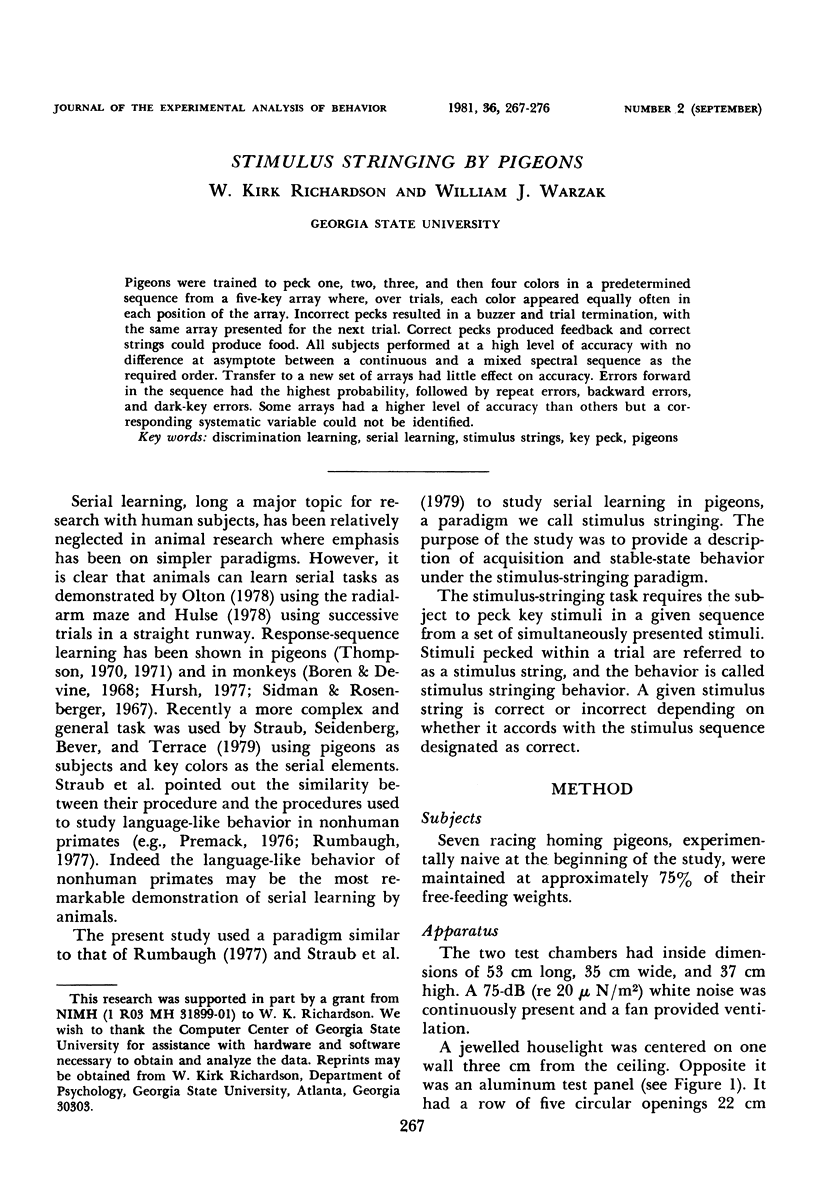

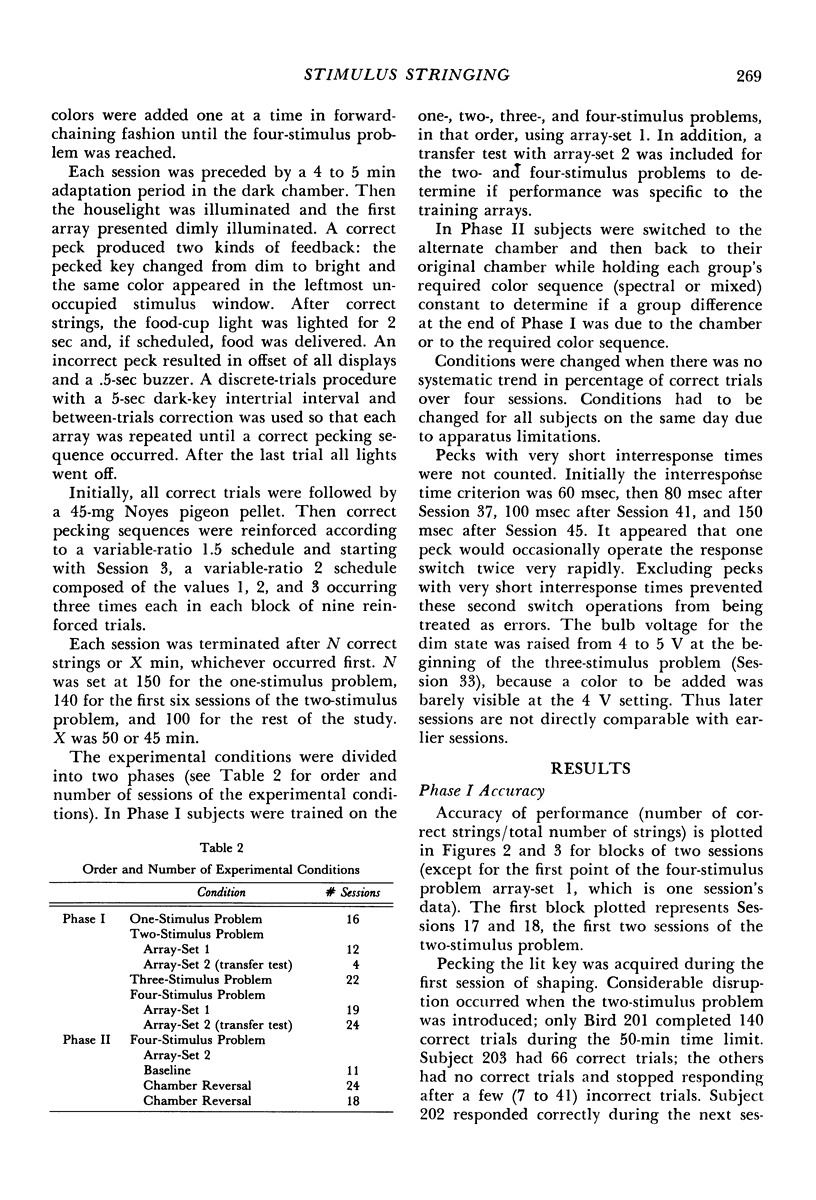
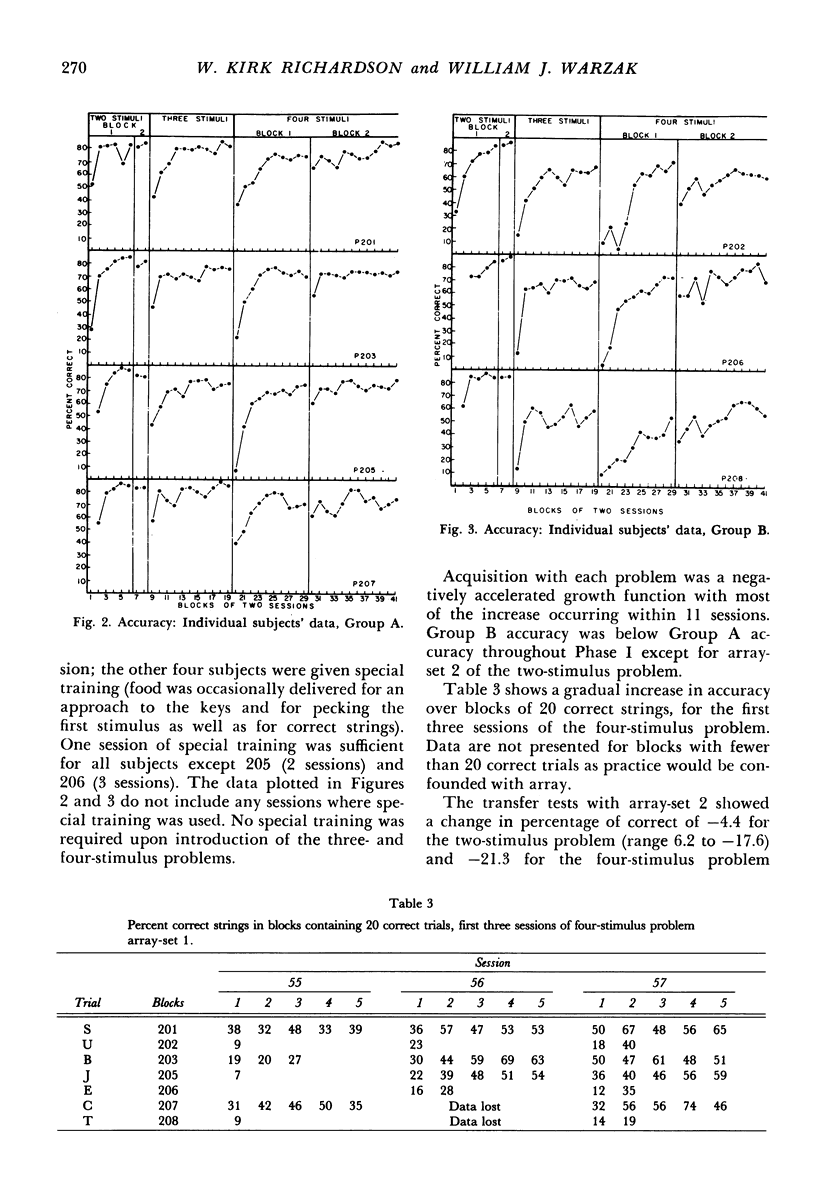
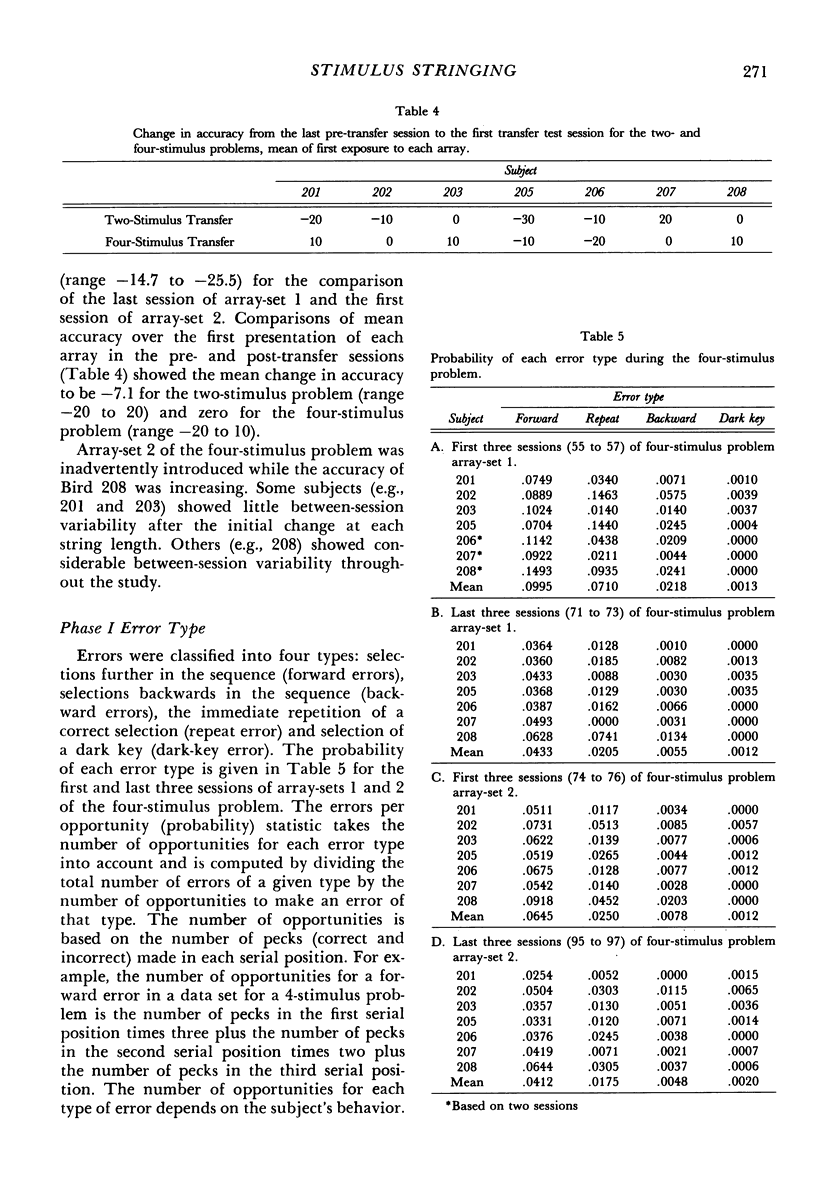
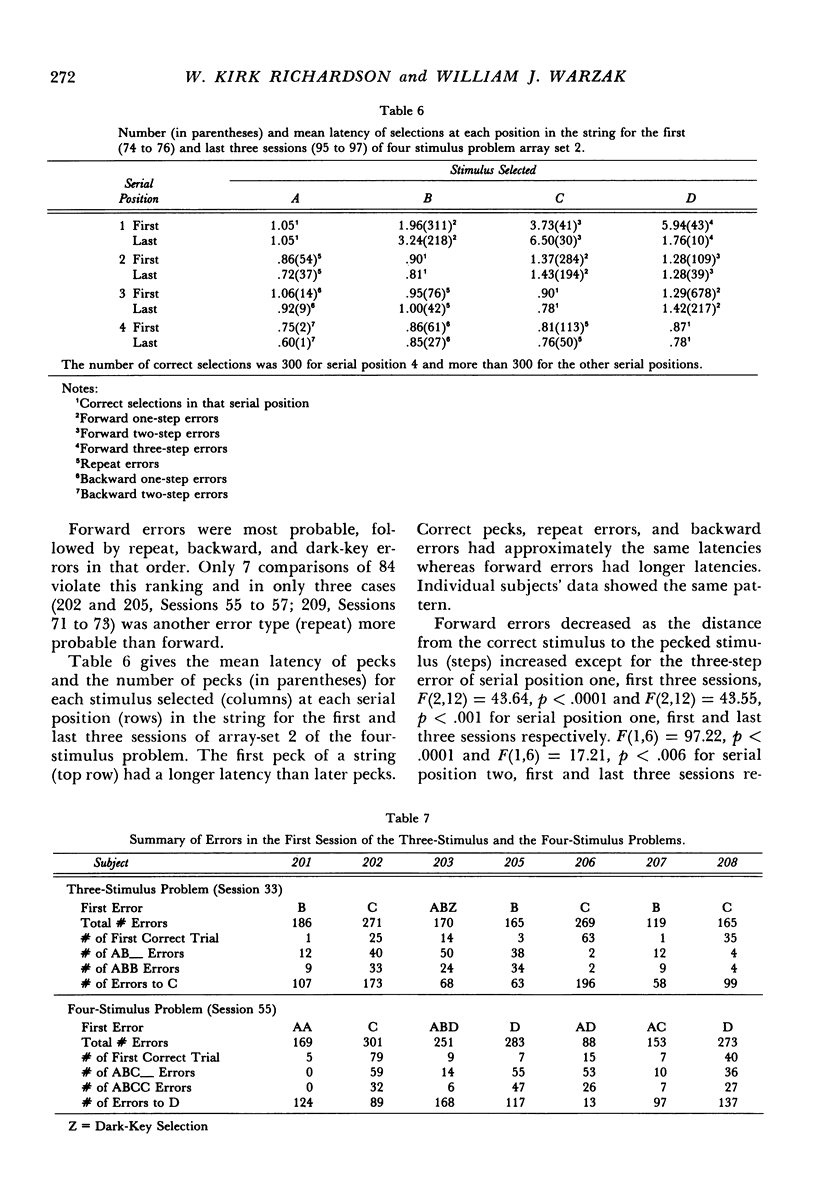
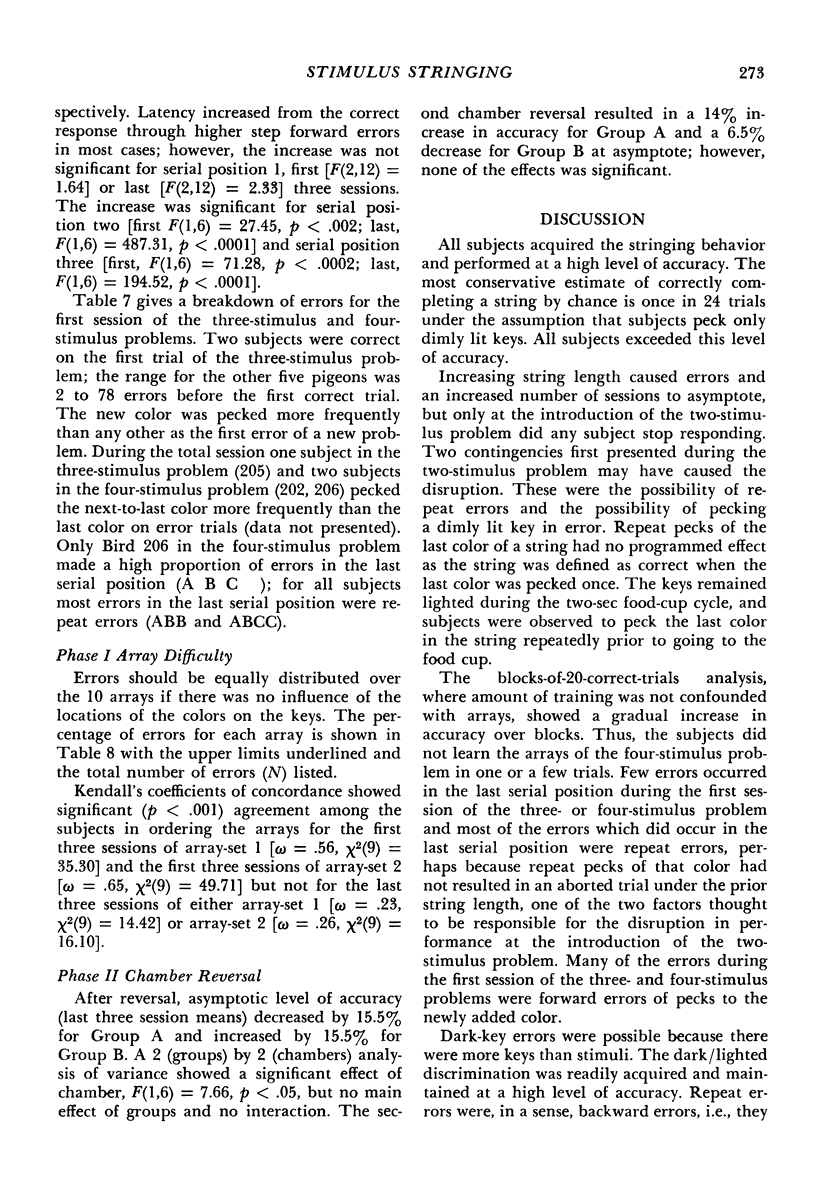
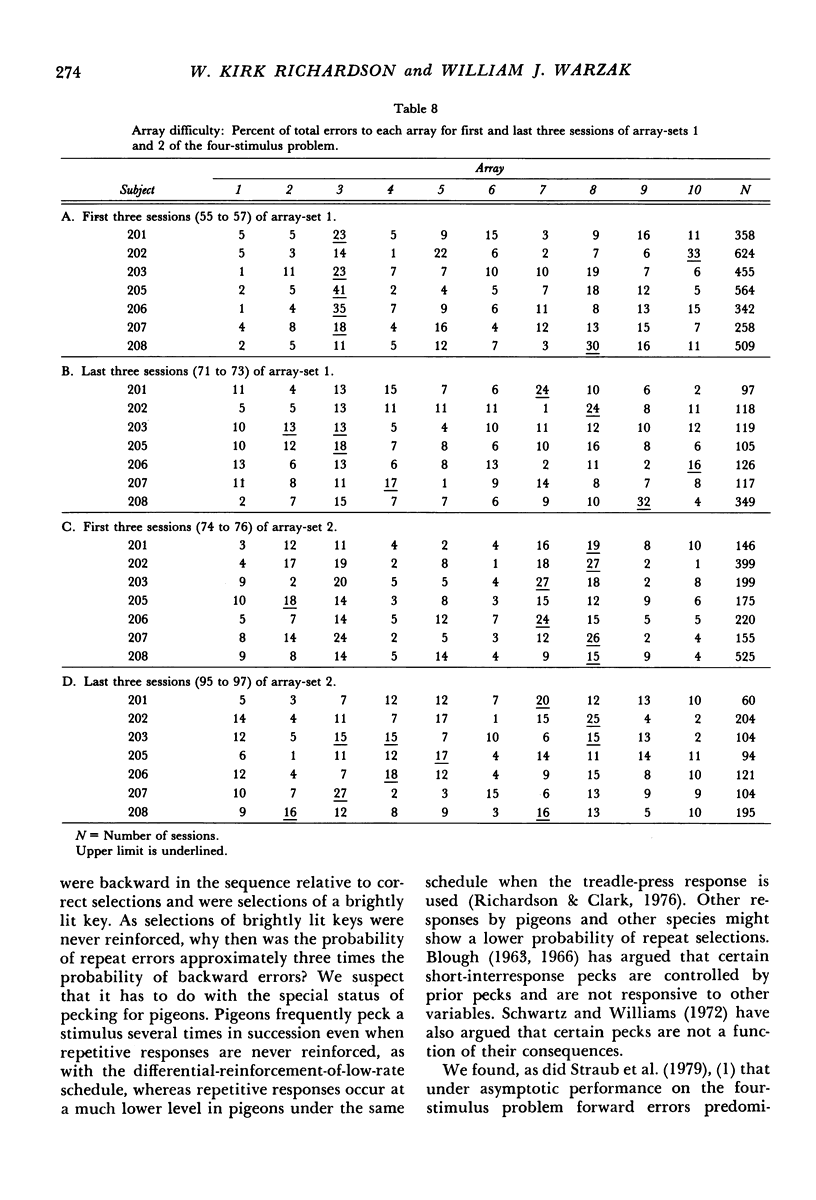
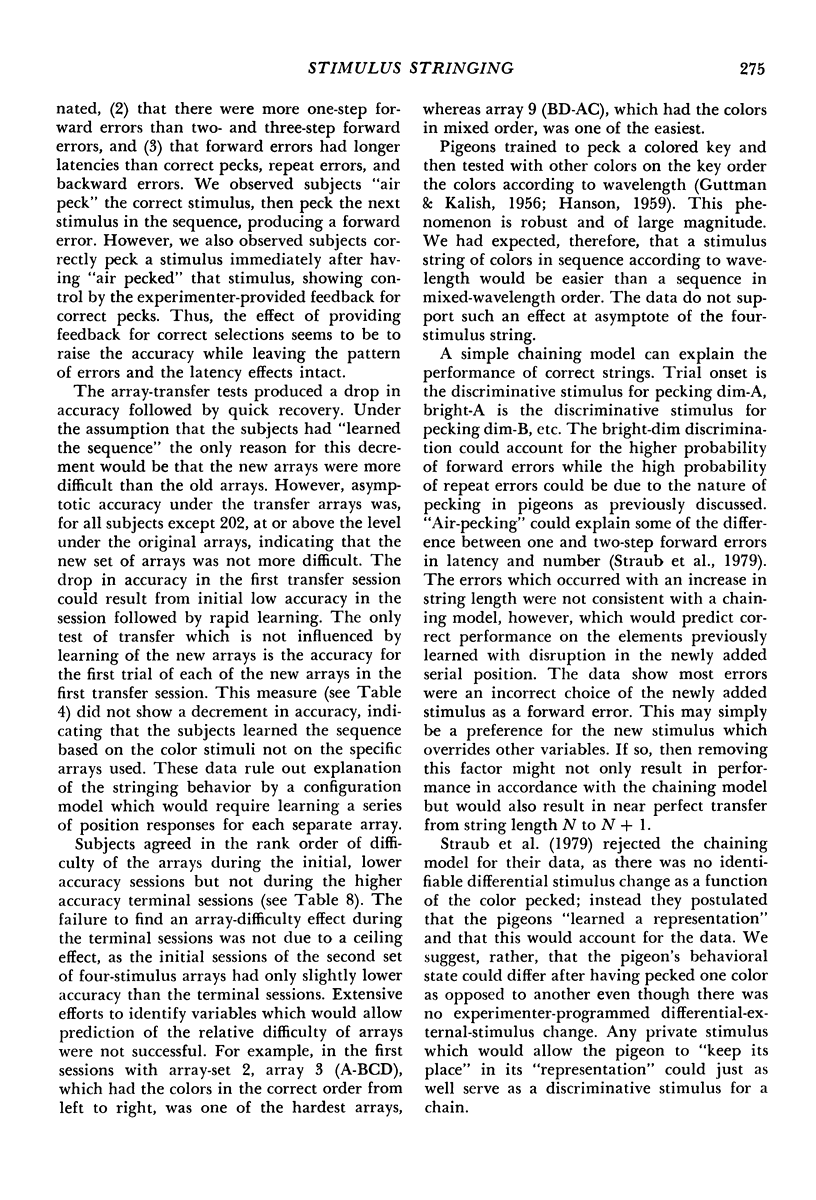
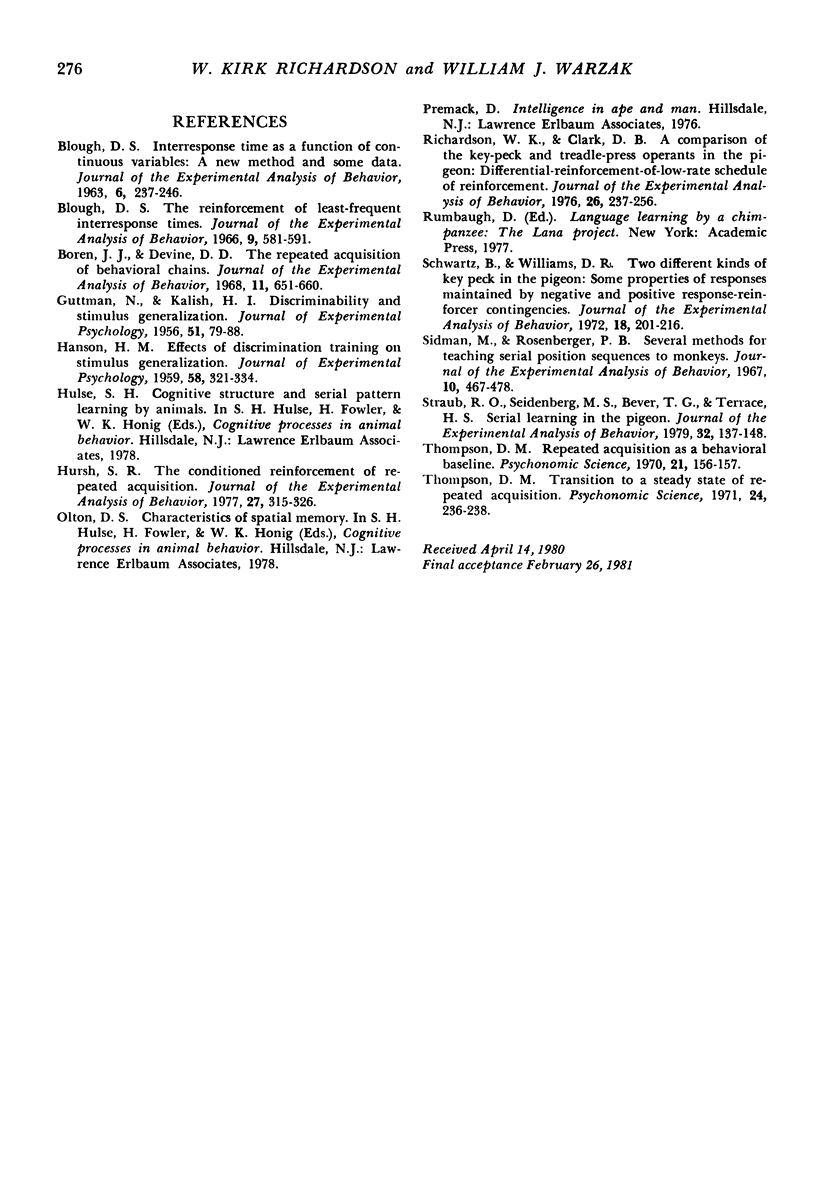
Selected References
These references are in PubMed. This may not be the complete list of references from this article.
- Blough D. S. Interresponse time as a function of continuous variables: a new method and some data. J Exp Anal Behav. 1963 Apr;6(2):237–246. doi: 10.1901/jeab.1963.6-237. [DOI] [PMC free article] [PubMed] [Google Scholar]
- Blough D. S. The reinforcement of least-frequent interresponse times. J Exp Anal Behav. 1966 Sep;9(5):581–591. doi: 10.1901/jeab.1966.9-581. [DOI] [PMC free article] [PubMed] [Google Scholar]
- Boren J. J., Devine D. D. The repeated acquisition of behavioral chains. J Exp Anal Behav. 1968 Nov;11(6):651–660. doi: 10.1901/jeab.1968.11-651. [DOI] [PMC free article] [PubMed] [Google Scholar]
- GUTTMAN N., KALISH H. I. Discriminability and stimulus generalization. J Exp Psychol. 1956 Jan;51(1):79–88. doi: 10.1037/h0046219. [DOI] [PubMed] [Google Scholar]
- HANSON H. M. Effects of discrimination training on stimulus generalization. J Exp Psychol. 1959 Nov;58:321–334. doi: 10.1037/h0042606. [DOI] [PubMed] [Google Scholar]
- Hursh S. R. The conditioned reinforcement of repeated acquisition. J Exp Anal Behav. 1977 Mar;27(2):315–326. doi: 10.1901/jeab.1977.27-315. [DOI] [PMC free article] [PubMed] [Google Scholar]
- Richardson W. K., Clark D. B. A comparison of the key-peck and treadle-press operants in the pigeon: differential-reinforcement-of-low-rate schedule of reinforcement. J Exp Anal Behav. 1976 Sep;26(2):237–256. doi: 10.1901/jeab.1976.26-237. [DOI] [PMC free article] [PubMed] [Google Scholar]
- Schwartz B., Williams D. R. Two different kinds of key peck in the pigeon: some properties of responses maintained by negative and positive response-reinforcer contingencies. J Exp Anal Behav. 1972 Sep;18(2):201–216. doi: 10.1901/jeab.1972.18-201. [DOI] [PMC free article] [PubMed] [Google Scholar]
- Sidman M., Rosenberger P. B. Several methods for teaching serial position sequences to monkeys. J Exp Anal Behav. 1967 Sep;10(5):467–478. doi: 10.1901/jeab.1967.10-467. [DOI] [PMC free article] [PubMed] [Google Scholar]
- Straub R. O., Seidenberg M. S., Bever T. G., Terrace H. S. Serial learning in the pigeon. J Exp Anal Behav. 1979 Sep;32(2):137–148. doi: 10.1901/jeab.1979.32-137. [DOI] [PMC free article] [PubMed] [Google Scholar]


